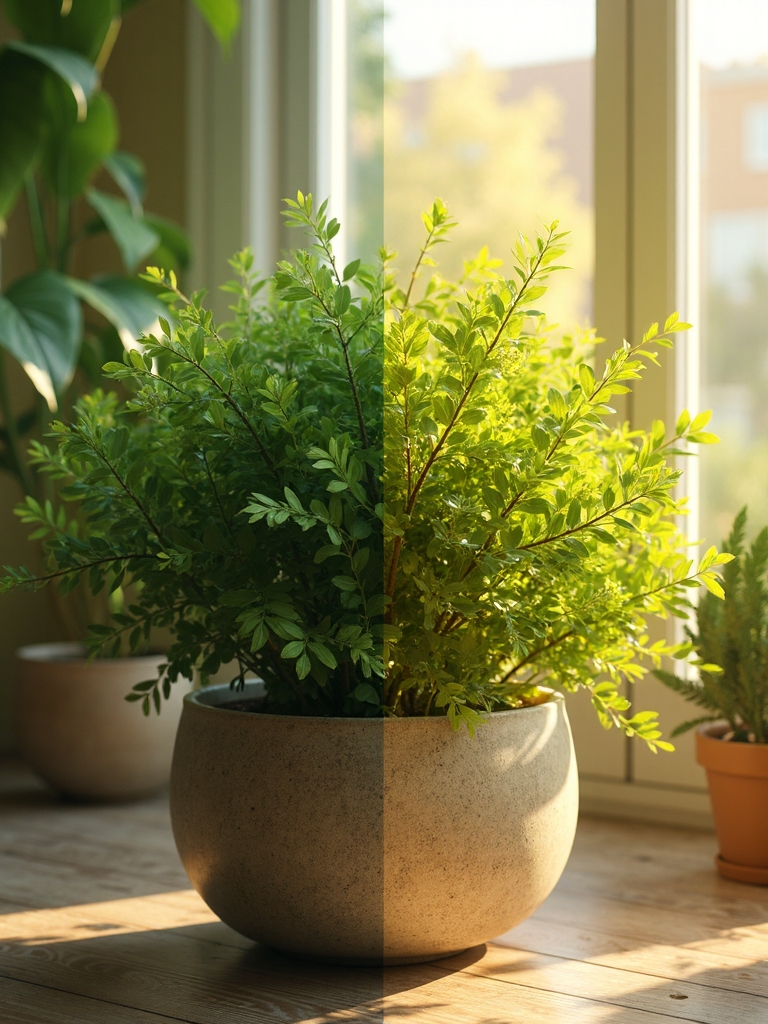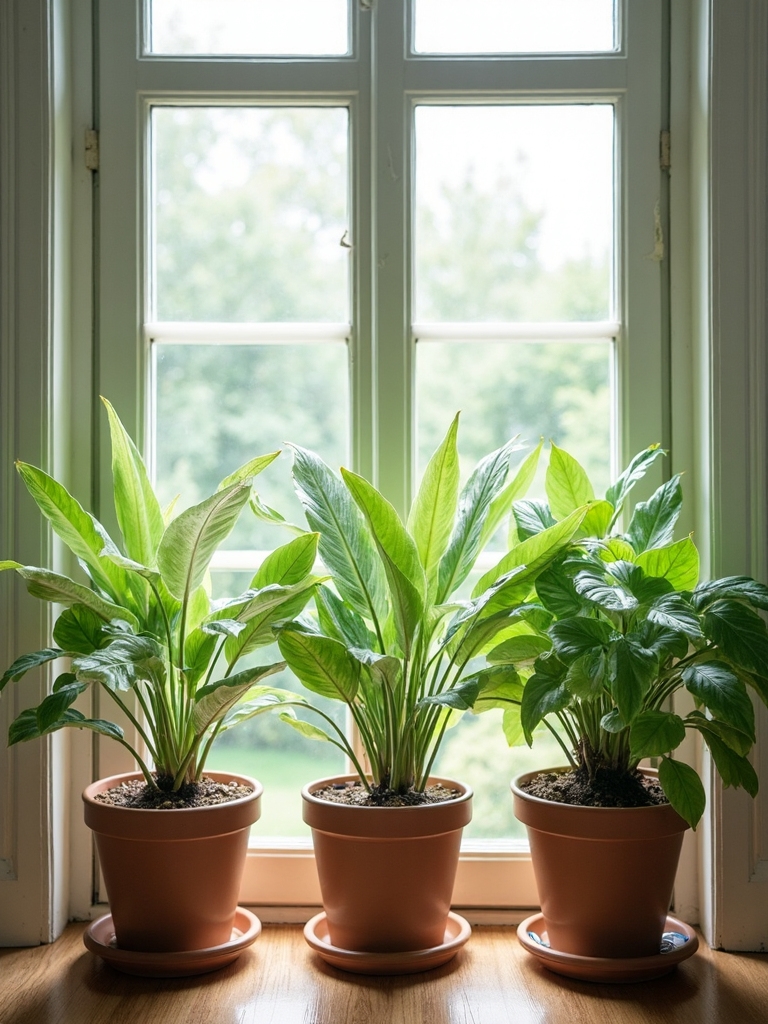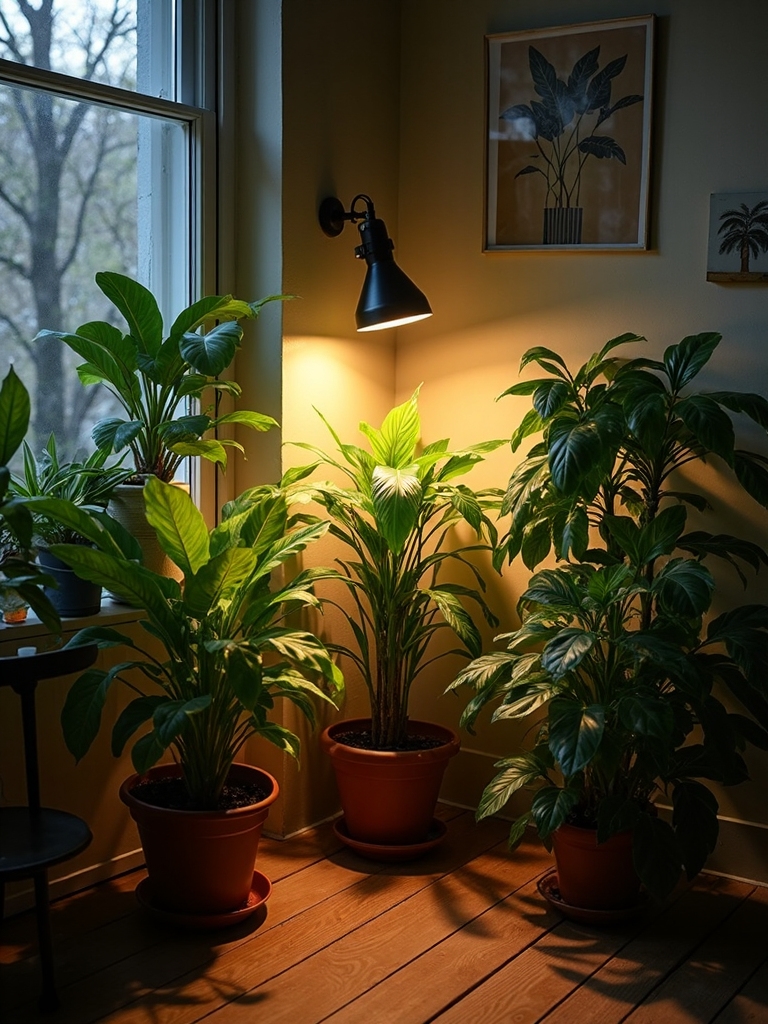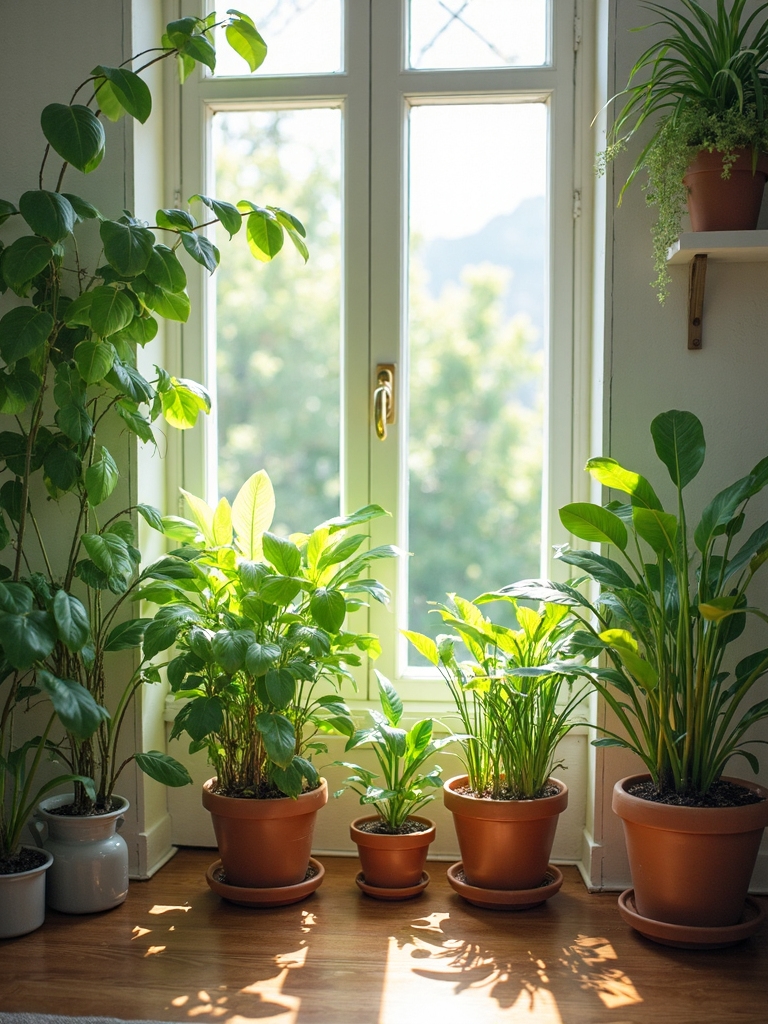I’ve watched so many plant parents struggle with the sunlight puzzle—myself included! You bring home that gorgeous new fiddle leaf fig, place it in what seems like the perfect spot, then watch it slowly decline despite your best efforts. It’s like trying to cook without knowing the temperature of your oven! Understanding your home’s light patterns isn’t just helpful—it’s the difference between thriving plants and a collection of expensive compost. Ready to decode your windows’ secret language?
Why Light Is Vital to Plant Survival

Three essential elements keep your plants alive: water, soil, and light—but I’d argue light might be the most crucial of all!
Without light, your plants can’t perform photosynthesis—their indispensable food-making process. I’ve seen plants stretch and strain toward windows like desperate sun-seekers!
Light directly impacts every aspect of growth, from stem strength to leaf color. When your plants look sad, check their light first!
Decoding Light Requirements for Common Houseplants

Five distinct light categories exist for houseplants, and I’ve learned the hard way that matching your plant to the right one makes all the difference!
Your succulents crave 6-8 hours of direct sunshine, while your ferns will crisp up in that same light source.
Watch your Monstera’s growth patterns—smaller leaves often signal insufficient light.
Even tolerant snake plants lose their stunning variegation when light-starved.
Telltale Signs Your Plant Is Light-Starved

Now that you understand what light your plants need, let’s talk about what happens when they don’t get it. I’ve seen countless plants desperately reaching for light, stretching tall and leggy with sparse foliage.
When the amount of light is insufficient, you’ll notice larger gaps between leaf sets and lower leaves dropping. Your plant’s overall wellbeing declines, fundamentally transmitting an SOS signal that it’s starving for sunshine.
The Dangers of Too Much Light Exposure

Just as humans can get sunburned, your green friends can suffer from too much of a good thing. I’ve seen plants with scorched, yellow leaves curling downward when they’re getting an excessive amount of light.
Your plant might look stunted despite your best care, and worse, this stress makes them prime targets for pests and diseases. Balance is key!
How to Measure Light Levels in Your Home

Figuring out your home’s light levels doesn’t require a botany degree! I always use both simple and tech methods to guarantee my plants are receiving adequate light.
You can start with the shadow test—hold your hand one foot above your plant and check the shadow’s sharpness. For more precision, try a light meter app on your phone.
Light plants need at least 6 hours daily!
Window Direction and Its Impact on Indoor Light

Four key directions determine your plant’s happiness in your home! South-facing windows are sunlight superstars, flooding your space with direct sunlight all day.
East windows offer gentle morning rays, while west windows provide afternoon warmth. North-facing spots get minimal light, perfect for shade-lovers.
Getting the right amount means matching each plant to its perfect window—like finding their personal sunshine sweet spot!
Seasonal Light Changes and How to Adapt

Every season brings dramatic changes to your plant’s light diet! I’ve noticed my own houseplants looking dramatically different as daylight hours shift.
In winter, you’ll need to move plants closer to windows or add grow lights to support new growth. Come summer, that same window might scorch your leafy friends!
Regularly monitoring and adjusting growing conditions guarantees your plants thrive year-round.
Strategic Plant Placement for Optimal Light

When I first became a plant parent, I struggled endlessly with finding the perfect spots for my green babies! Now I know to group plants with similar light needs together.
Those requiring much light go directly by south-facing windows, while medium light lovers sit a few feet back. Remember to rotate your plants weekly and consider grow lights for those sun-worshipping varieties during darker months.
When to Consider Supplemental Grow Lights

Even the best-placed plants can sometimes struggle to get enough natural light, which is where grow lights come to the rescue! I’ve found that during winter’s shorter days, my higher light plants often show signs of light starvation.
You’ll want to ponder LEDs when your plants need bright light but your windows can’t deliver. They’re especially helpful for indoor gardens in darker corners!
Recognizing Light-Related Leaf Changes

Your plant’s leaves often tell the most honest story about its light situation before other symptoms appear! I’ve learned that when your plant is getting insufficient sunlight, the leaves speak volumes.
Look for yellowing foliage, smaller new growth, or leggy stems stretching toward light sources. In low light conditions, variegated plants may lose their distinctive patterns as they produce more chlorophyll to compensate.
Balancing Light With Other Plant Care Factors

While leaves reveal light issues, proper plant care involves juggling multiple factors that work together like musicians in an orchestra.
Your Houseplant Getting too much water? Even perfect lighting won’t save it! I’ve learned that plants require a harmonious balance of light, water, humidity, and nutrition.
When I adjust one element, I’m careful to reconsider the others—it’s like maintaining a delicate ecosystem in your home!
Troubleshooting Light Issues in Specific Plant Species

Countless plant species respond differently to light conditions, making it essential to understand their individual needs.
I’ve learned that succulents will stretch awkwardly toward light sources when deprived, while ferns turn crispy in direct sun.
Even though you’re following general plant care rules, watching for these species-specific signals will help you quickly adjust their light exposure.
Frequently Asked Questions
How Do I Tell if My Plants Are Getting Enough Light?
You’ll recognize adequate light when your plants grow evenly, not stretching. Monitor natural light levels throughout your home. Most plants need 6-8 sufficient sunlight hours daily. Yellow leaves may indicate too much light.
How to Know How Much Sunlight a Plant Needs?
Check your plant’s tag or search online for its preferred light intensity needs. You’ll find specific sunlight exposure duration requirements—typically labeled as full sun, partial sun, or shade—for your particular plant species.
Can You Use Your Phone as a Light Meter for Plants?
Yes, you can use light sensor apps on your phone to measure plant lighting conditions. Sunlight tracking apps provide convenient readings, though they’re less precise than professional meters. They’ll give you a helpful estimate of light levels.
How Do I Make Sure My Indoor Plants Get Enough Light?
Position plants near south-facing windows for maximum light. You’ll want to ponder your window orientation and light fixture placement to supplement natural light. Monitor growth patterns and use your phone’s light meter app for accuracy.
Conclusion
You’re now equipped to be your plants’ light champion! Watch for their signals, adjust their positions, and don’t hesitate to invest in grow lights when needed. Remember, proper lighting isn’t just one factor—it’s the foundation of plant health. By tuning into your green friends’ specific needs, you’ll convert from accidental plant assassin to assured plant parent. Your leafy companions will thank you with lush growth!
